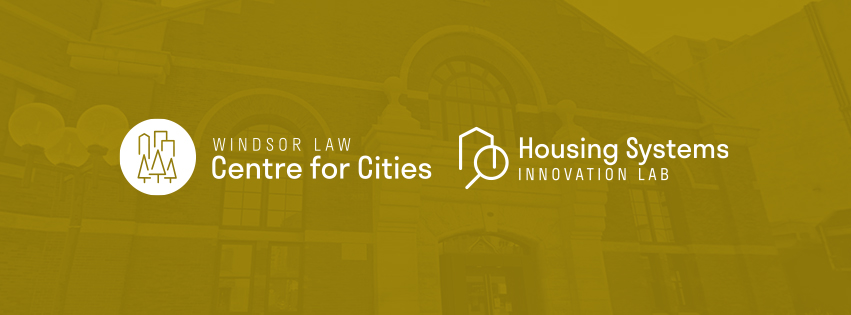Blog: Climate mitigation and resiliency through municipal infrastructure projects
(3 April 2020) By Luigi Iantosca (Windsor Law 3L student, Cities and Climate Action Forum member).
When one thinks of the building of a large-scale infrastructure project, they may think about the negative effects that these enterprises have on the environment and how they factor into continuing climate change. However, there are several examples of local communities utilizing infrastructure projects in innovative ways to battle climate change and be more ecologically conscious. This blog post will focus on the possibility for local levels of government to continue to build much-needed infrastructure projects while also being resilient to or mitigating climate change.
The first example is the town of Gibsons in British Columbia. Gibsons exemplifies how climate resiliency is possible at the local level in regard to infrastructure projects. This coastal town has a population of approximately 4,900 people and is located north-west of Vancouver. The town of Gibsons needed to save money and as a result looked for ways they could cut costs on their infrastructure budget. They took an eco-friendly approach to their savings by utilizing “eco-assets accounting.” Dr. Hank Venema from the International Institute for Sustainable Development defines an eco-asset accounting as a “look at the value of the services the local ecosystem provided, as well as its vulnerability to climate change.” Essentially the town of Gibsons wanted to utilize the natural eco-assets around them to save both money and be more environmentally friendly. They did so in three ways.

This diagram shows how the aquifer works. Photo credit: Town of Gibsons
Dr. Venema indicates that “aquifers were storing and filtering water; creeks, ditches, wetlands were providing rainwater management; and their foreshore area was acting as a natural seawall. Each of these natural assets was providing services with significant monetary value.” By using the natural assets available to them, Gibsons both saved money and provided resiliency to climate change. They did this by ensuring that the natural assets they were using were fail-proof to ensure that no harm would come to the environment or their community.
From a legal perspective, the use of bylaws was relied upon to implement this project. For example, the required permits and land use planning are illustrated in the Town of Gibsons’ Aquifer Mapping Report section 7.3.
The Gibsons example is particularly important because of the size of the town. Although it has a population of less than 5000, they were able to be resourceful by relying on the natural habitat around them. Like larger centres, smaller towns and local communities are also able to build climate resiliency through infrastructure.
In addition to climate resiliency, climate mitigation can also be accomplished through municipal infrastructure projects. The use of smart grids is one example. The United States Department of Energy defines a smart grid as “an unprecedented opportunity to move the energy industry into a new era of reliability, availability, and efficiency that will contribute to our economic and environmental health.” Smart grids reduce peak demand and make electricity transmission more efficient in addition to a plethora of other benefits. From a general policy and legal perspective, the Department of Energy’s Title XIII, Section 1301 titled the Statement of Policy on Modernization of the Electricity Grid gives policy makers the capacity to modernize the current electricity grid to include smart grids across the United States.
Currently, the Pecan Street Project (PSP) in Austin, Texas is testing the use of smart grids over 700 acres. The PSP is being used under a public-private partnership infrastructure model that uses the expertise of both private industry and government to extract the most of each of these body’s resources to mitigate climate change. The Prairie Climate Centre emphasizes that smart grids have features importing for combatting climate change at the local level including “the integration of smart metering for both energy and water systems to address key interactions such as the energy required to heat water.” Smart metering will encourage consumers to do their part on climate change mitigation by allowing them to track and monitor their consumption of electricity, in the same way that they can monitor other uses such as bank account information or internet consumption on their smart devices.

This image depicts a smart grid. Photo Credit: medium.com
The use of infrastructure projects by local levels of government is both a real and effective solution to being both climate resilient and mitigating climate change. Local levels of government do not need to wait for provincial/state or federal levels of government to tell them what to do to combat climate change. Often, local levels of government are in the best position to know what is important to their communities and how they can successfully implement change. Local levels of government can learn from the above examples to respond to climate change.



